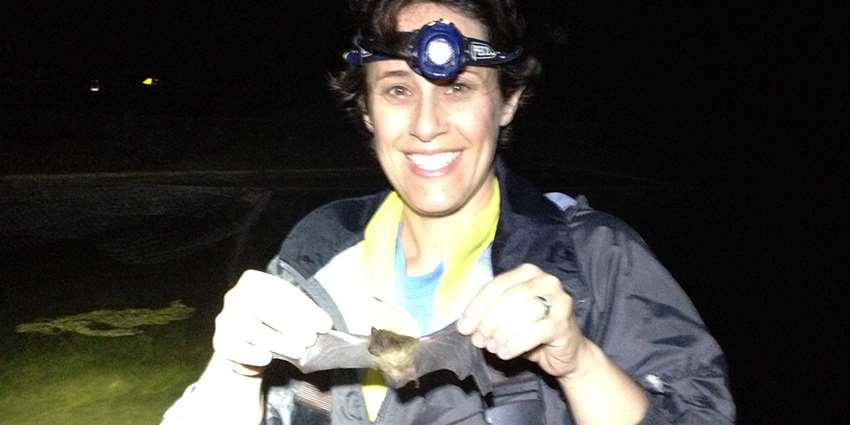Most people are wary of parasitic insects such as lice and ticks. But for Dr. Jessica Light, understanding these complex parasites is a driving force of her research.
As an associate professor in Texas A&M University’s Department of Wildlife and Fisheries Sciences, Light studies evolutionary processes and associations between organisms, mainly mammals and their parasites.
“One of the main themes I am interested in is understanding how different organisms interact through time,” she said. “I definitely define myself as an evolutionary biologist because there’s a time aspect involved with my research and in understanding how, when and why associations develop.”
Light initially began college as a premedical student, but the combination of the rigorous academic competition and her longtime love for the outdoors inspired her to pursue a career in the natural sciences instead. She earned her bachelor’s degrees in biology and in resource ecology and management from the University of Michigan and her doctorate in zoology from Louisiana State University.
Her research focuses on the factors that establish and maintain host-parasite relationships. This typically involves studying mammals and their ectoparasites, such as lice, fleas and ticks, and their interactions.
Since some parasites can potentially be vectors for disease, her research can help determine if a parasite is specific to a particular host, such as a rat, or if it can transmit diseases to livestock and humans.
Her ongoing projects involve broad, evolutionary questions and working with species of potential conservation concern, she said. For instance, she is working with a colleague to understand the evolutionary history and revise the taxonomy of kangaroo mice found in the Great Basin Desert in western North America.
“That’s important, because we might find some evolutionary distinct unit that might be in need of conservation, when previously we thought it was all one thing,” she said.
She is also working with a student to assess biodiversity across East Foundation properties in South Texas. This study will facilitate a better understanding of organismal diversity and habitat associations, which are not well understood in South Texas due to a high proportion of private property.
Most of Light’s research relies on collecting animals from the field for morphological and genetic data and obtaining parasites. Once the samples from the field are used, the animals are often turned into scientific specimens for museum collections. “We keep organs for genetic studies and the skeleton and skin for future morphological studies,” she said.
Along with studying molecular data and morphology, the team uses statistical analysis to help test various hypothesis, she said.
“A lot of what I do is centered on understanding how different species are related to each other,” she said. “So, I use a variety of different types of data to build hypotheses of those relationships, which you can later test with different types of data.”
Light also serves the community by giving educational presentations to children and students in the Bryan-College Station community. One benefit of such outreach is that introducing science topics at a young age can encourage more girls to pursue science and math careers, she said.
Reflecting on where her research will go in the future, Light said the dynamic nature of her work could take her team in various directions.
“It’s sort of hard to predict, because lots of times you are doing a project and you stumble on something, and it leads you into this whole new research program, things that you weren’t expecting to do,” she said. “It’s all going to be centered on trying to understand relationships of different organisms and how they come together.”
Visit The Light Lab for more information and updates about her ongoing research.



